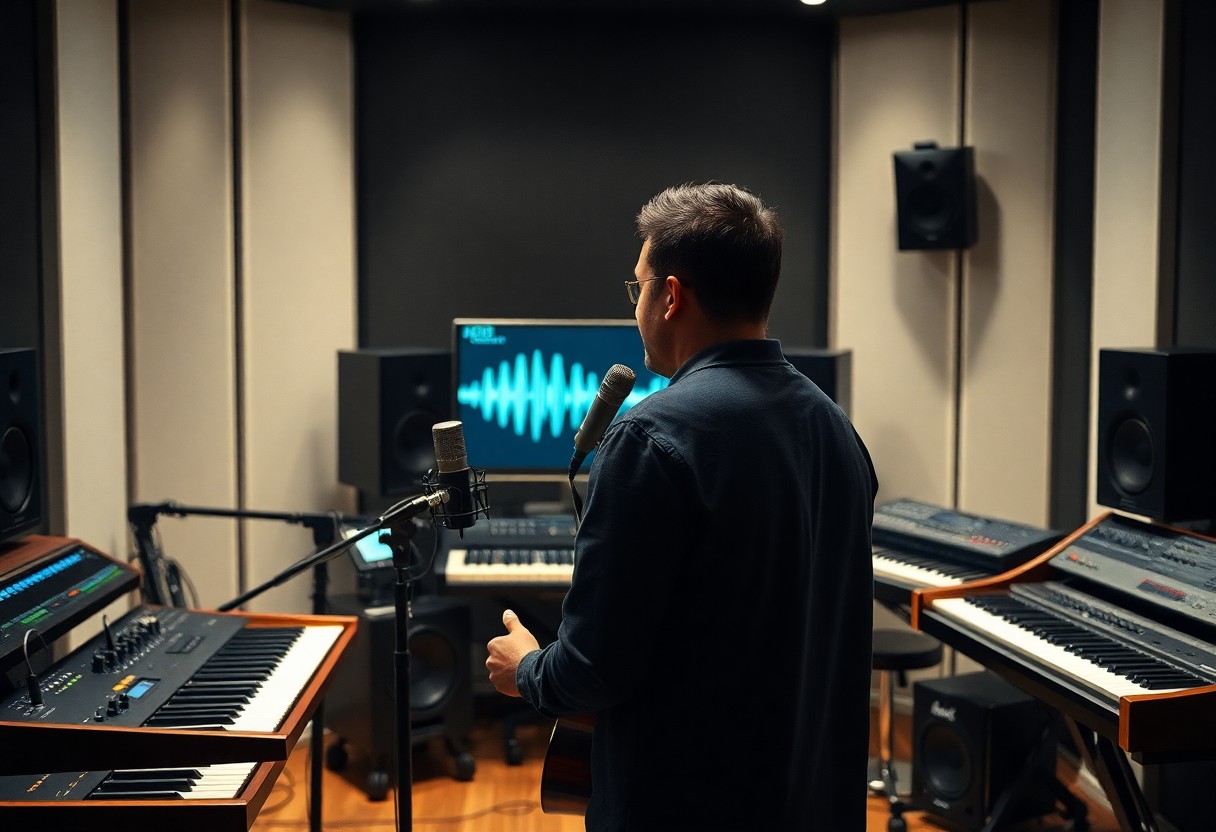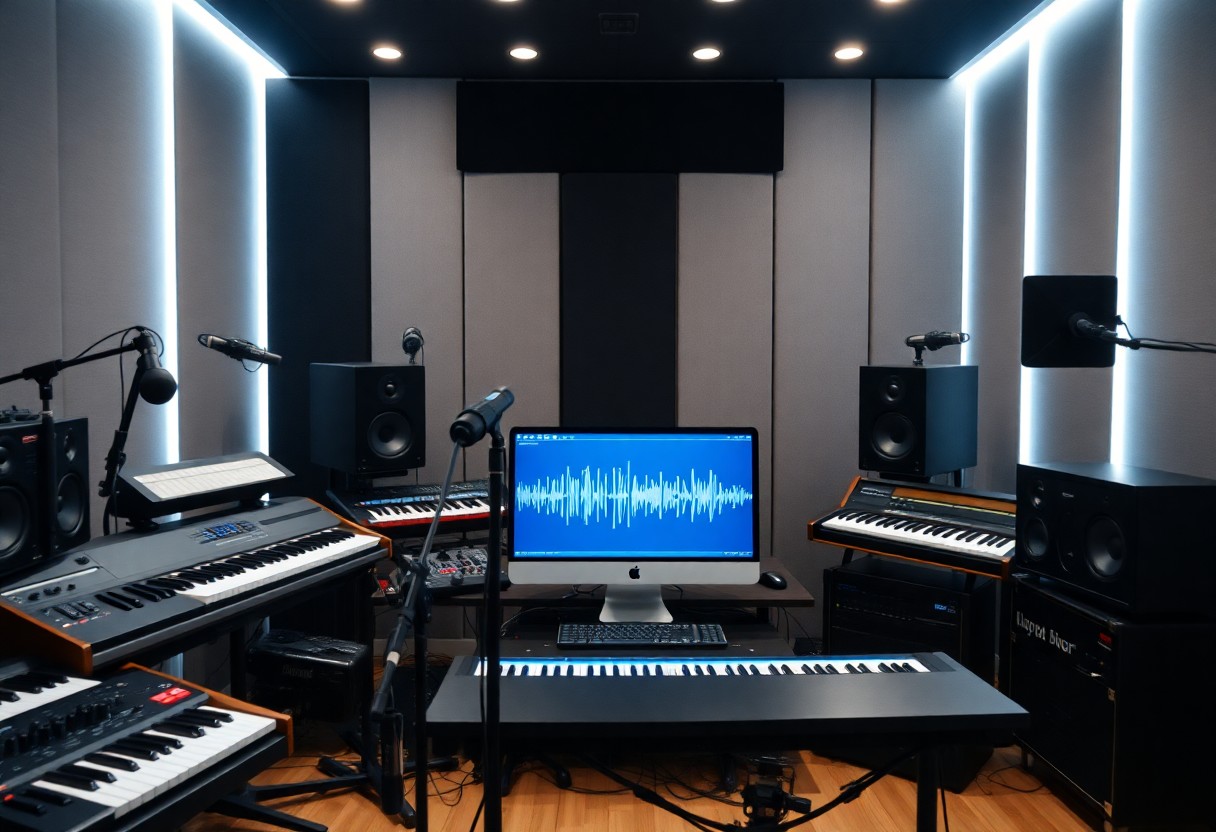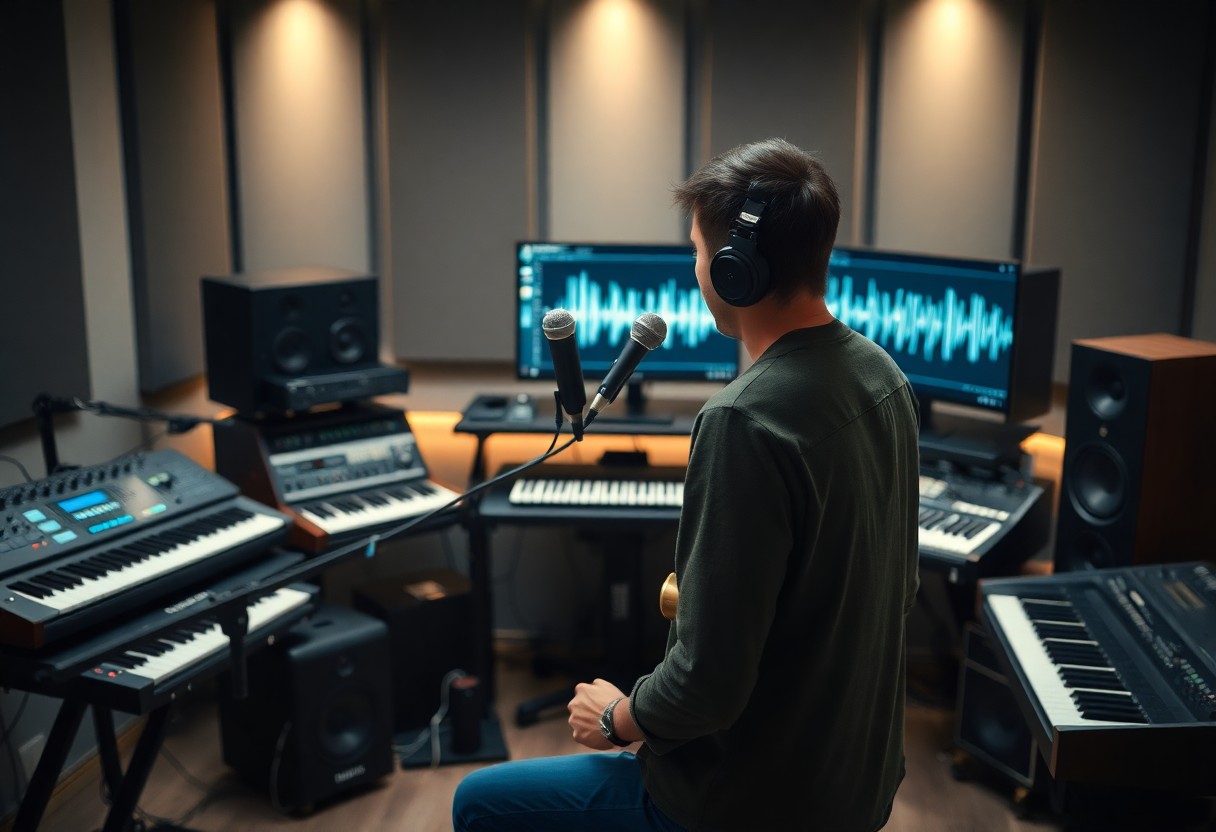Most aspiring musicians and sound artists may not fully grasp the transformative power of electro-acoustic music. As you examine into the world of the Master of Electro Acoustic Music (M.E.A.M.), you’ll discover how this innovative genre combines electronic technology with traditional acoustic sounds to create unique auditory experiences. Your journey will reveal the techniques, tools, and philosophies that shape this fascinating discipline, allowing you to elevate your artistic expression and engage with audiences in entirely new ways.
Key Takeaways:
- The Master of Electro Acoustic Music (M.E.A.M.) program combines elements of traditional music composition with modern technology, emphasizing the integration of electronic sound manipulation and acoustic performance.
- Students in the M.E.A.M. program gain hands-on experience with advanced audio production tools, sound design techniques, and innovative performance practices, preparing them for diverse careers in music, sound art, and multimedia.
- The curriculum often encourages collaboration across different disciplines, allowing students to work with visual artists, filmmakers, and performers to create interdisciplinary projects that push the boundaries of conventional music.
The Intricate Fusion of Sound and Technology
Defining Electro Acoustic Music
Electro Acoustic Music represents a harmonious blend of traditional acoustic instruments and electronic sound manipulation. It eschews strict genre boundaries, allowing for unprecedented creativity. At its core, this form of music leverages technology to enhance or even redefine the auditory experience, often blurring the lines between live performance and studio production. You may find it in various contexts, from avant-garde concerts to film scores, showcasing its versatility and appeal.
How Technology Transforms Traditional Compositions
Your traditional compositions gain new life through technological advancements, which can completely alter their sound palette and presentation. Digital audio workstations (DAWs) and electronic instruments allow for sound layering, effects processing, and innovative mixing techniques that were impossible in a purely acoustic setting.
For instance, the integration of sampling techniques enables you to incorporate sounds from everyday life into your compositions, creating a rich tapestry of auditory elements. Additionally, tools like synthesizers and MIDI controllers can emulate traditional instruments while adding unique textures and effects. This fusion leads to dynamic performances that captivate audiences and offer composers a means of exploring their creativity in multidimensional ways. Artists can manipulate the sounds in real-time, allowing for spontaneous collaboration between technology and music, and enabling new artistic expressions that challenge conventional norms. Consider how an orchestral piece could be enhanced with live electronic elements, resulting in an immersive experience that transforms both the composition and the performance itself.

The Evolution of Electro Acoustic Composition
Over the decades, electroacoustic music has evolved through various technological advancements and artistic movements. From its inception in the early 20th century, the genre has embraced a range of styles and methodologies. Early pioneers utilized tape recorders and analog synthesizers, while contemporary composers explore digital audio workstations and live coding. This continual evolution allows for endless experimentation, pushing the boundaries of what constitutes music today. For a deeper understanding of this genre, check out Electroacoustic Music: 3 Characteristics of Electroacoustic.
Historical Milestones in Electro Acoustic Music
Key moments in electroacoustic music history include the development of musique concrète in the 1940s and the establishment of electronic music studios, such as those at Columbia University and IRCAM. These milestones facilitated the integration of recorded sounds into compositional practices, enabling composers to experiment with new textures and forms that were previously unimaginable.
Influential Artists and Their Impact on the Genre
Many artists have significantly shaped the landscape of electroacoustic music. Pioneers like Pierre Schaeffer, whose work in musique concrète laid the groundwork for sound manipulation techniques, and Karlheinz Stockhausen, known for his innovative use of space in music, have left lasting legacies. Additionally, contemporary figures such as Brian Eno and Autechre continue to influence new generations of musicians, showcasing the genre’s adaptability and relevance in modern sound art.
Diving deeper into the contributions of influential artists reveals their lasting impact on electroacoustic music. Pierre Schaeffer’s experimentation with everyday sounds revolutionized compositional approaches, while Karlheinz Stockhausen introduced spatialization concepts, fundamentally altering how sound is perceived in environments. The ambient works of Brian Eno introduced the idea of music as an atmospheric entity, inviting listeners to interact with sound in novel ways. Similarly, the intricacies of Autechre’s algorithmic compositions challenge traditional structures, enriching the genre’s dialogue surrounding creativity and technology. These artists not only advanced the genre but also provided frameworks that contemporary musicians utilize to explore new sonic landscapes.

The Education and Skill Set Required for M.E.A.M.
Success in Electro Acoustic Music requires a unique blend of technical knowledge and artistic sensitivity. Your educational journey might include formal studies in music production, sound design, or audio engineering, supplemented by hands-on experience with various instruments and sound manipulation techniques. Proficiency in music theory and composition enhances your ability to craft compelling narratives through sound, while an understanding of acoustics helps you navigate the intricacies of sonic textures. This multifaceted skill set empowers you to create innovative works that bridge the gap between traditional musical forms and contemporary audio experiences.
Essential Training and Techniques for Aspiring Artists
Gaining mastery in Electro Acoustic Music demands dedication to both practice and study. Engaging in workshops or courses focused on experimental music and sound art will strengthen your creative abilities. You should also incorporate various techniques, such as field recording, live coding, and generative music composition, which allows you to explore the boundaries of sound in unique ways. Immerse yourself in collaborative projects or ensemble work that pushes your limits and nurtures your artistic voice.
Navigating the Digital Landscape: Tools and Software
To thrive as a Master of Electro Acoustic Music, you must familiarize yourself with a range of digital tools and software that enhance your creative process. Familiarity with DAWs (Digital Audio Workstations) like Ableton Live, Logic Pro, or Pro Tools enables you to produce, edit, and manipulate audio effectively. You might also explore plug-ins for synthesis, effects, and sampling to expand your sonic palette. Free software options like Audacity or Reaper can also be beneficial for those starting on a budget and seeking to develop their sound design skills.
Delving into the digital landscape reveals an array of powerful instruments that can elevate your projects. Synthesisers such as Native Instruments’ Massive or Serum provide vast sound design possibilities, while effects processors like iZotope’s Ozone enhance your mixes. Incorporating Max for Live or Pure Data enables you to create custom modules and audio tools tailored to your artistic vision. Additionally, platforms like Splice and Loopmasters offer extensive libraries of loops and samples, enabling you to compose with rich, varied sound sources. Mastering these tools will not only streamline your workflow but also inspire innovative approaches to your electro acoustic creations.
The Emotional Impact of Electro Acoustic Soundscapes
Electro acoustic soundscapes have a profound ability to evoke emotion, transforming abstract concepts into visceral experiences. Through a palette of manipulated sounds, you can tap into deep-rooted sensations, from nostalgia to anxiety, creating a profound bond between the listener and the composition. The dynamics of sound manipulation—such as layering textures and varying timbres—enhance the emotional spectrum, allowing you to craft immersive experiences that resonate with your audience on a personal level.
Understanding Audience Perception
Your audience’s perception of sound is influenced by a myriad of factors, including cultural background, personal experiences, and even current moods. This uniqueness drives how individuals connect with different soundscapes, often resulting in diverse emotional reactions to the same piece. By considering these variances, you can curate experiences that resonate more deeply with targeted groups, enhancing emotional engagement and connection within your work.
Creating Emotional Resonance Through Composition
Crafting emotional resonance in electro acoustic music involves a careful balance of sound design, structure, and narrative. By incorporating familiar environmental sounds with abstract tones, you can guide listeners through auditory landscapes that provoke specific feelings. Notably, using dissonance and resolution can manipulate tension in your composition, eliciting emotional responses that mirror real-life experiences. The power of pacing and dynamics further amplifies this emotional journey, making the soundscape not just something to listen to but a story to feel.
Utilizing various composition techniques can deepen the emotional connection in your electro acoustic pieces. For instance, pairing silence with sudden bursts of sound can create shock value, while gradual fades can invoke feelings of loss or nostalgia. Additionally, employing field recordings that capture real-world sounds, like rustling leaves or distant city chatter, can ground your work in a relatable context. This interplay allows your audience to not just listen, but to feel immersed in an evocative auditory narrative, transforming their experience from passive to deeply engaging. Techniques like contrasting textures can enhance dramatic moments, further enriching the journey through the compositions you create.
The Future of Electro Acoustic Music
As the world continues to evolve technologically and culturally, electro acoustic music stands at the forefront of this transformation. Enhanced interactivity, greater accessibility to cutting-edge tools, and collaboration across genres will redefine what electro acoustic compositions can achieve. Your role as a listener or creator will expand as immersive experiences flourished by augmented and virtual reality become mainstream, redefining traditional performances into multisensory explorations that engage not just the ears but the entire body and mind.
Trends and Predictions in the Genre
Current trends suggest a shift toward a more global sound palette, as artists blend cultural influences with electronic textures. Increased accessibility to music production technology enables a more diverse array of creatives to participate in the genre, pushing boundaries and allowing for unique collaborations. The growth of artificial intelligence in art and music creation also hints that you’ll encounter sounds and experiences that challenge your traditional understanding of musical composition.
Innovations That Will Shape Tomorrow’s Electro Acoustic Artists
Advancements in technology will significantly influence the next wave of electro acoustic artists. From AI-driven composition tools to sophisticated hardware synthesizers, newcomers will likely harness these innovations to experiment with sound in ways previous generations could not. Enhanced live-streaming capabilities and virtual platforms will also allow artists to connect with global audiences, expanding their reach and collaborative possibilities, thus shaping a vibrant music community.
Imagine being part of an electro acoustic concert that fuses live performance with real-time audience interaction, driven by AI that adapts its sound in response to your movements. Programmable soundscapes created with generative software will respond to environmental changes, immersing the listener in an ever-evolving auditory experience. Additionally, advancements in wearable tech could enable artists to manipulate sound through physical gestures, creating a seamless blend of music and movement. This landscape will empower you as both a creator and an audience member, engaging you in a fully participatory musical journey where your presence directly influences the art being created.
Final Words
The Master of Electro Acoustic Music (M.E.A.M.) offers you an unparalleled opportunity to explore the intersection of technology and creative expression. Through immersive coursework and hands-on projects, you will develop your unique voice within this innovative genre. By engaging with both traditional acoustic and modern electronic techniques, you will enhance your compositional skills and broadening your artistic horizons. This program positions you to be at the forefront of contemporary music, empowering you to make significant contributions to the evolving soundscape.

